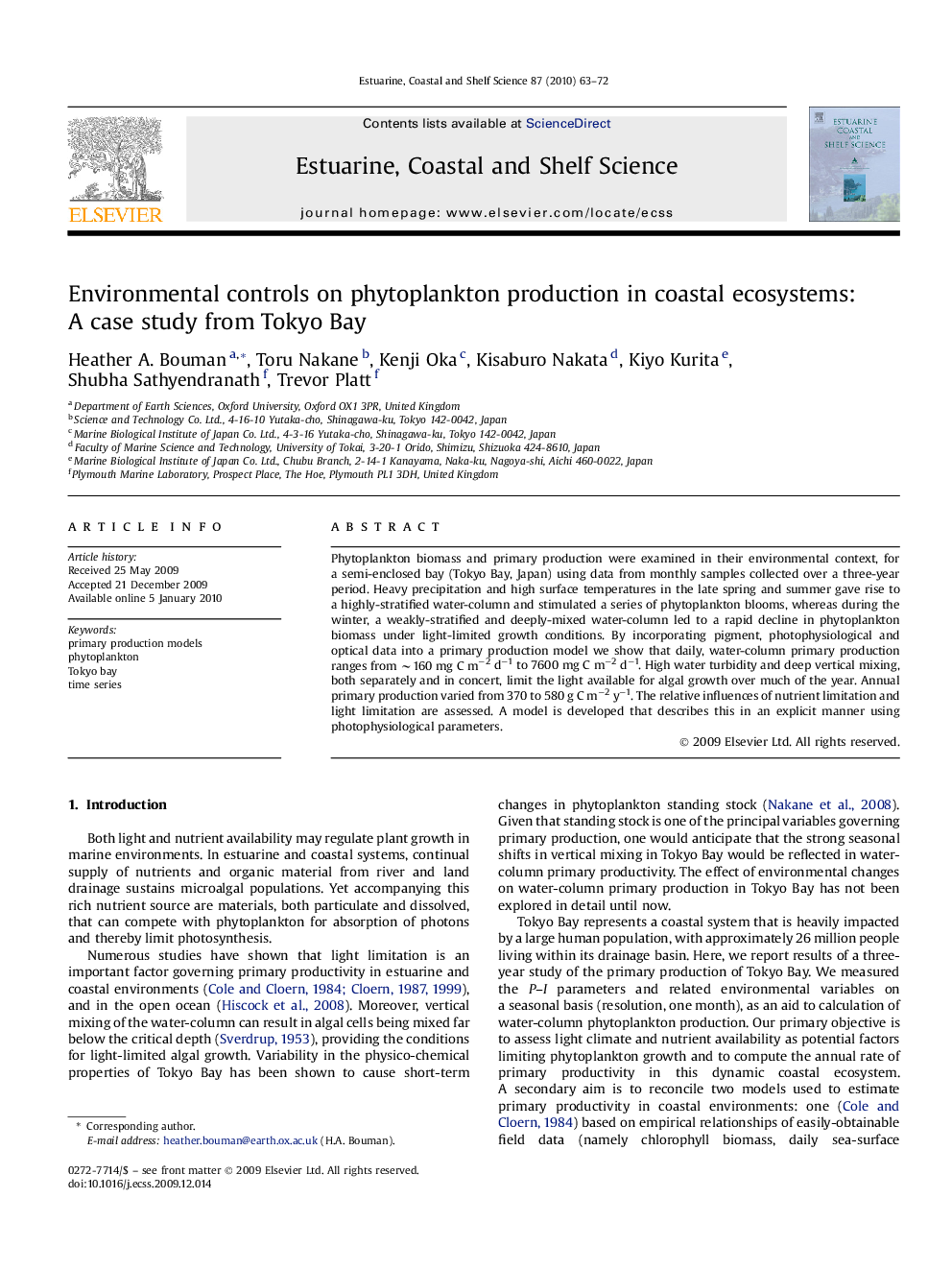| Article ID | Journal | Published Year | Pages | File Type |
|---|---|---|---|---|
| 4541089 | Estuarine, Coastal and Shelf Science | 2010 | 10 Pages |
Phytoplankton biomass and primary production were examined in their environmental context, for a semi-enclosed bay (Tokyo Bay, Japan) using data from monthly samples collected over a three-year period. Heavy precipitation and high surface temperatures in the late spring and summer gave rise to a highly-stratified water-column and stimulated a series of phytoplankton blooms, whereas during the winter, a weakly-stratified and deeply-mixed water-column led to a rapid decline in phytoplankton biomass under light-limited growth conditions. By incorporating pigment, photophysiological and optical data into a primary production model we show that daily, water-column primary production ranges from ∼160 mg C m−2 d−1 to 7600 mg C m−2 d−1. High water turbidity and deep vertical mixing, both separately and in concert, limit the light available for algal growth over much of the year. Annual primary production varied from 370 to 580 g C m−2 y−1. The relative influences of nutrient limitation and light limitation are assessed. A model is developed that describes this in an explicit manner using photophysiological parameters.
